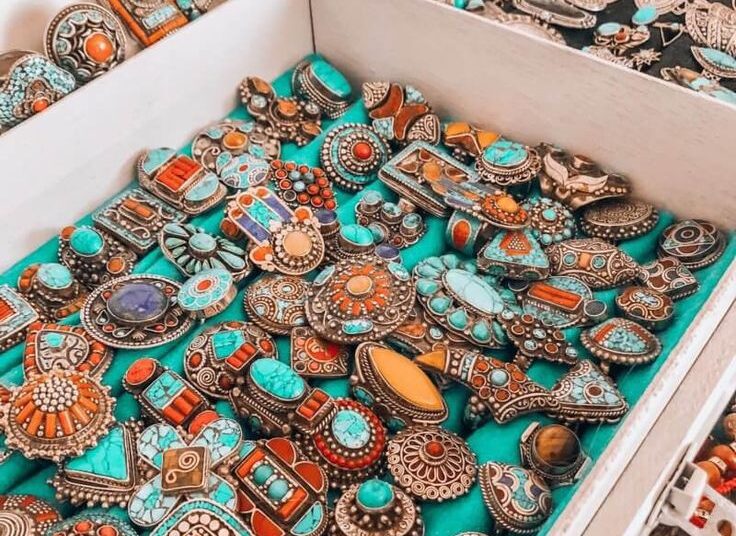Al-Saleheya Alley has been standing proudly in close proximity to al-Mu’izz, one of Fatimid’ Cairo’s most impressive and famous streets, for hundreds of years now.
The alley has born witness to the movement of history and the rise and the fall of sultans and princes over these years.
It is now a mecca for precious stone lovers, traders and manufacturers. And, it is gaining world fame for this.
Foreigners and locals visit the alley in their hundreds every day to buy, sell and witness precious stones of all types, being traded and made.
The alley is becoming especially famous for the gemstone trade.
In this part of Fatimid Cairo, dozens of gemstone shops of all sizes take their places to be part of the thriving trade of these pieces of mineral crystal which come in almost all inspiring colours and polished forms.
Visitors, healers and precious stone lovers of all classes come here to marvel at the view of the sparkling and glittering stones and get them at bargain prices.
Alley traders have seen a spike in demand for the stones in recent months.
“Gemstones have no season, but the rise in demand has been noticeable in the past few months,” Mustafa Ezzat, an alley shop owner, told the Egyptian Mail.
“This rise has been driven by people who believe in the healing effect of precious stones,” he added.
Saleheya neighbourhood derives its name from Saleheya School, built by King Saleh Najm al-Din Ayyub in 641 AH 1243 AD as Egypt’s first university to be focused on the study of the four Islamic schools of thought. The university was also the seat of Egypt’s judiciary.
Accounts differ about the history of the precious stone trade in the alley.
Some people say the trade was started by Egyptian Jews. Other people say the trade started at the hands of Chinese students who came to Egypt to study at al-Azhar University and lived in the neighbourhood.
Some people tell of Shagaret al-Durr, the first Mamluk ruler of Egypt, getting rid of her jewellery on one side of the alley upon learning about a conspiracy against her.
Gemstones come from mountains and deserts. The way they are formed depends on the geology of the earth where they come from.
Meteorites come from the Western Desert. Agate comes from Aswan. There are also the Sinai turquoise, amethyst and lapis lazuli.
According to Ezzat, there are clear distinctions between local and imported gemstones.
“The prices of gemstones are also decided by their final shape,” Ezzat said.
He said Sinai turquoise sells for 50 Egyptian pounds ($2.7) a gramme.
Ayman was apprenticed by one of the gemstone makers in the alley when he was in his twenties.
He has been part of this craft for over three decades now, having learned its basics and secrets.
Ayman is now able to tell whether a gemstone is fake or real.
Some of the gemstones made in Egypt, he said, end up in other countries, including Arab Gulf states.
“Demand is also increasing, especially for products made of natural ivory and turquoise stones,” Ayman said.
He said precious stones mentioned in the Quran, the holy book of Muslims, are believed to have a healing effect and protect from evil.
These stones, Ayman said, include rubies, corals and pearls.
Apart from the stones that originate in Egypt, alley traders import stones from a wide range of countries, including Brazil, India, China and Pakistan.
Women make the bulk of al-Saleheya Alley visitors. The alley is also an important destination for those involved in handcrafts and those who believe in alternative medicine.
Sameh Mohamed, an alley worker who has been in precious stone making for decades now, says there is a healing effect for every gemstone.
He added that this healing effect depends on the seven energy centres distributed over the human body.
“Healing these seven centres is what a large scale of customers look for in this alley,” he said.






Discussion about this post